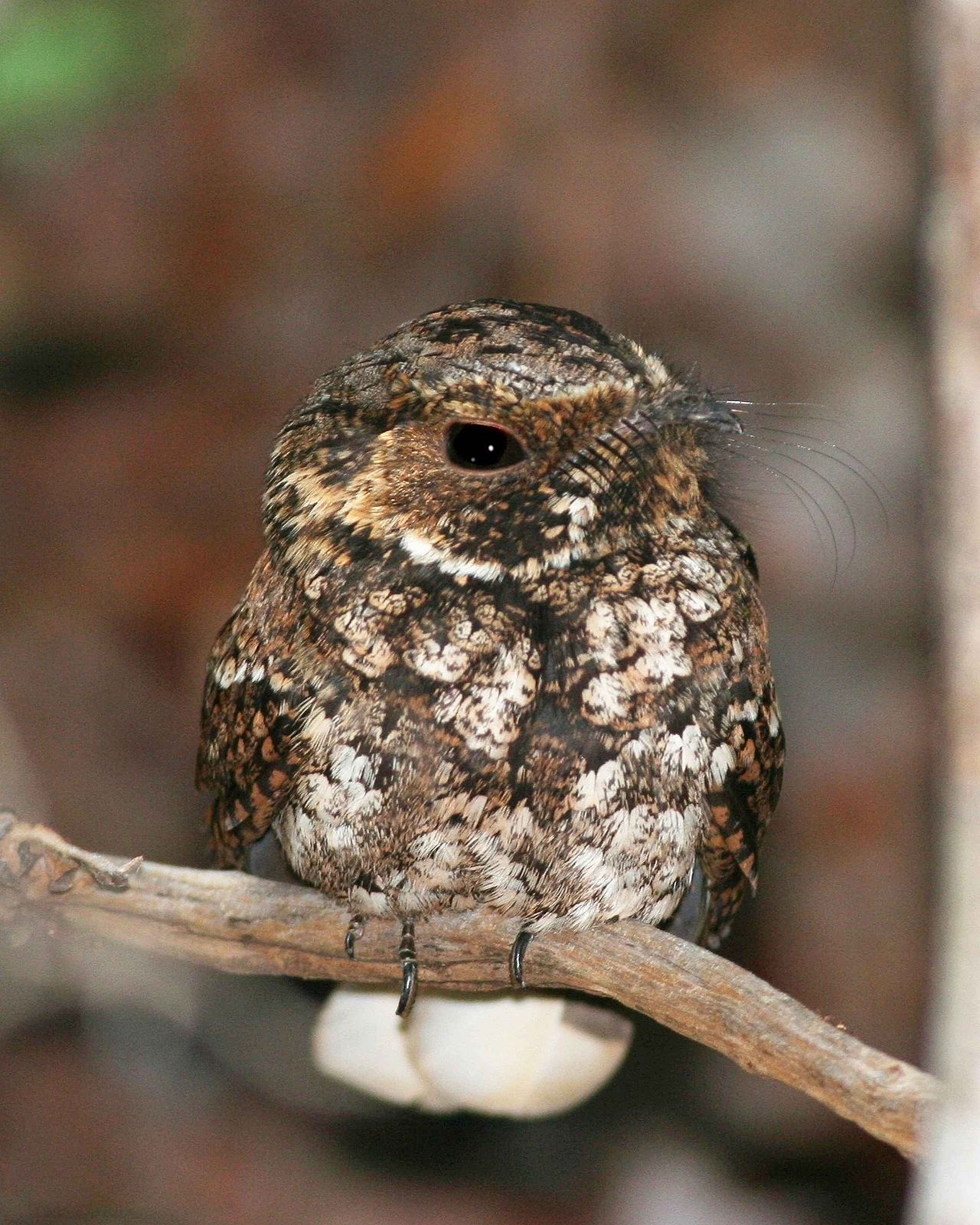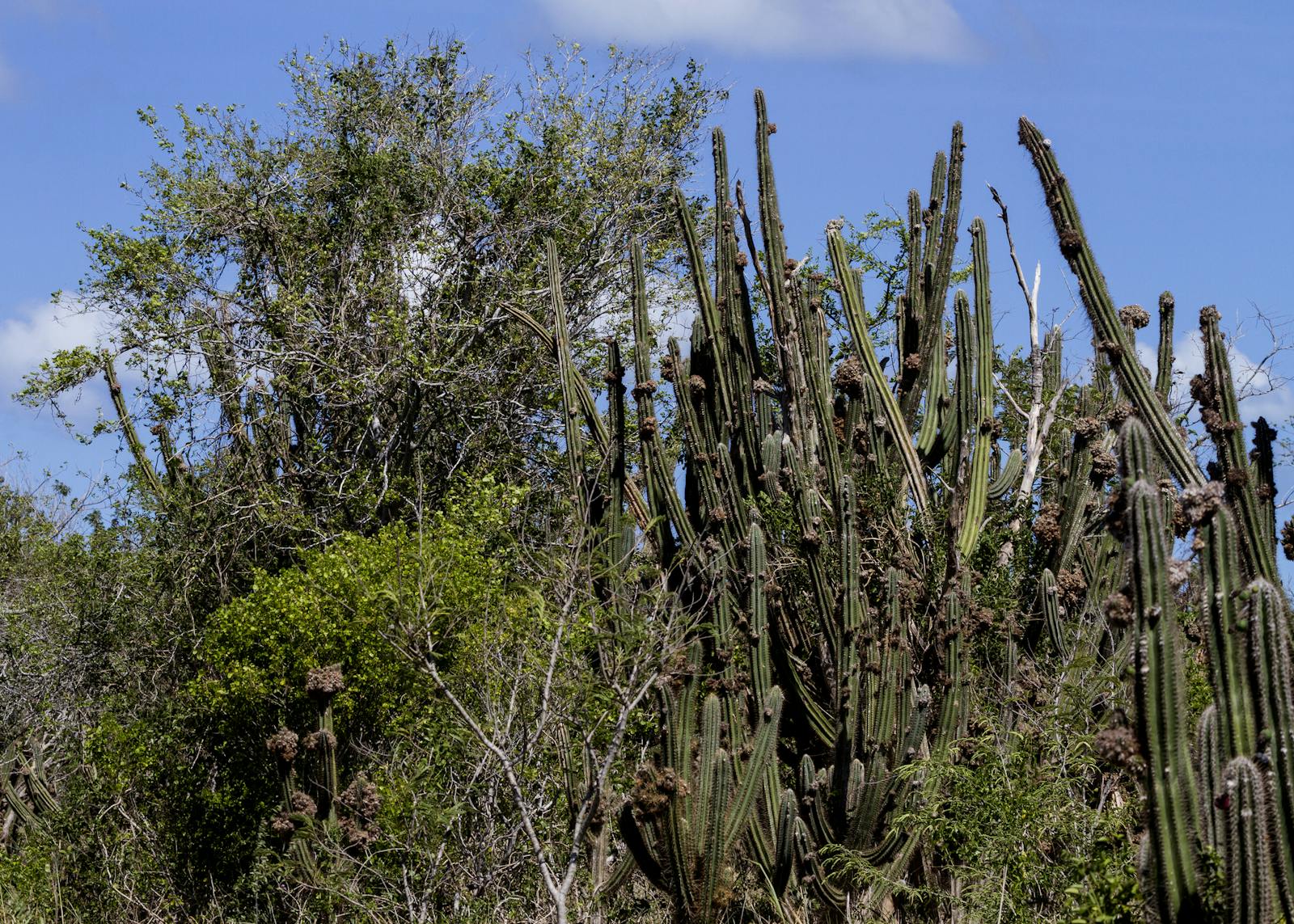Puerto Rican Dry Forests
The ecoregion’s land area is provided in units of 1,000 hectares. The protection goal is the Global Safety Net (GSN1) area for the given ecoregion. The protection level indicates the percentage of the GSN goal that is currently protected on a scale of 0-10.
Bioregion: Caribbean Islands (NT26)
Realm: Central America
Ecoregion Size (1000 ha):
128
Ecoregion ID:
543
Conservation Target:
54%
Protection Level:
2
States: Puerto Rico
The Mona ground iguana is native to Puerto Rico and is the largest land lizard within the country. Males have horn-like protrusions on the tips of their nose and both females and males have pointed scales that line their spine from their neck to their tail. Not only are these creatures exciting to see on the landscape, but they are also essential to the ecosystem. Seeds that pass through their digestive tract germinate more quickly and distribute at greater distances on the island. Additionally, these endangered iguanas are important for maintaining the vegetation and ecological equilibrium on the island.
.jpg)
The flagship species of the Puerto Rican Dry Forests ecoregion is the Mona ground iguana. Image credit: Courtesy of US Fish and Wildlife Service
The Puerto Rican Dry Forests ecoregion is located along the south-central and southwestern coast of Puerto Rico and on the adjacent islands of Mona, Vieques, Culebra, Desecheo, and Caja de Muertos. The landscape consists of undulating hills along the coast in the “rain shadow” of the island. Every year, the dry forests experiences a dry season lasting several months and low annual rainfall ranging from 600 mm to 1,000 mm on average. The climate is seasonally dry with a single rainy season, and temperatures is fairly consistent year-round range from a high near 31ºC in the summer (June to September) to a low of 21ºC in the winter. The vegetation display a range of adaptations to cope with the dry climate, including deciduous leaves, waxy coatings on leaves, trunks, and branches, and water storage structures.
This ecoregion is very biologically distinct with common trees like roughbark lignum-vitae, Kapok tree, and the Jamaican caper while on the dry less permeable limestone areas, plants such as holywood lignum-vitae and Plumeria alba are characteristic. Generally speaking, biodiversity is lower than nearby moist forests, but endemism is high due to its isolation and unique habitat. However, these dry forests do support over 180 bird species including 15 island endemic species.
The Puerto Rican nightjar (Caprimulgis noctitheris) is endemic and known only from a few areas in the dry southwest portion of the island as are several snail species. Over 10 species of lizards are known from the southern dry forests including two anole endemic to the dry forest zone; Anolis poncensis and Anolis cooki, while the Mona ground iguana is endemic to dry forest on the island of Mona.

Puerto Rican nightjar. Image credit: Creative Commons
Much of the native vegetation in this ecoregion was converted to agriculture before 1940, and like many other parts of the island what remains is in the harder to access areas which provided historical protection. The last large block of coastal dry forest and dry limestone forest (ca. 40 km2) occurs within the Guánica Commonwealth Forest and Biosphere Reserve.
Like many other tropical dry forests, which are highly threatened globally, clearing for development, fires, and introduced species continue to threaten the remaining habitat in this ecoregion. Introduced mammals in the dry forest zone include rhesus macaques and patas monkeys, both of which have become serious agricultural pests, and the Javan mongoose which was introduced to Puerto Rico in the 1800s.
The priority conservation actions for the next decade will be to: 1) protect the coastal dry forest that is still intact through a combination of private (community) and government interventions including refuges and reserves; 2) conduct more research into the biological distinctness of this region; and 3) work with local communities to initiate restoration initiatives tied to tourism and other income potential.
Citations
1. Olson, D. 2018. Puerto Rican dry forests. https://www.worldwildlife.org/ecoregions/nt0226 Accessed October 16, 2018
2. Allison, A., Lemm, J., Grant, T., and Jackintell, L. 2004. “Testing the Utility of Head starting as a Conservation Strategy for West Indian Iguanas”, Iguanas: Biology and Conservation, University of California Press, p. 210.
3. Garcia, M., Perez, N. & Wiewandt, T. 2000. Cyclura stejnegeri. The IUCN Red List of Threatened Species 2000: e.T29605A9503999. http://dx.doi.org/10.2305/IUCN.UK.2000.RLTS.T29605A9503999.en. Downloaded on 03 July 2019



